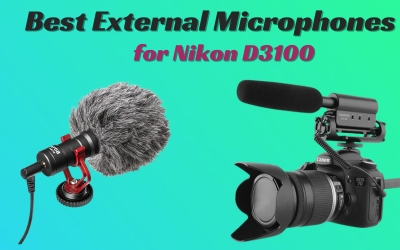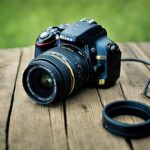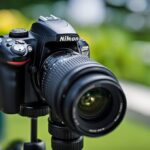If you are a content creator, podcaster, or musician, you know that the quality of your audio can make or break your work. One of the most debated topics in the audio world is whether a condenser mic makes you sound better. In this article, we will explore the science behind condenser microphones and whether they can actually improve the sound of your voice.
So, does a condenser mic make you sound better? The answer is: it depends. While a condenser mic can capture more detail and produce a clearer sound, it’s important to choose the right microphone for your voice and recording environment. In the next sections, we will explore the pros and cons of using a condenser mic and how to optimize its performance.
Key Takeaways
- Condenser microphones use a diaphragm and a charged backplate to convert sound into an electrical signal, allowing them to capture a wider range of frequencies and produce a more detailed sound.
- Whether a condenser mic makes you sound better depends on choosing the right microphone for your voice and recording environment.
- Optimizing the performance of your condenser mic can help you achieve a clearer and more detailed sound.
Table of Contents
ToggleUnderstanding Condenser Mic
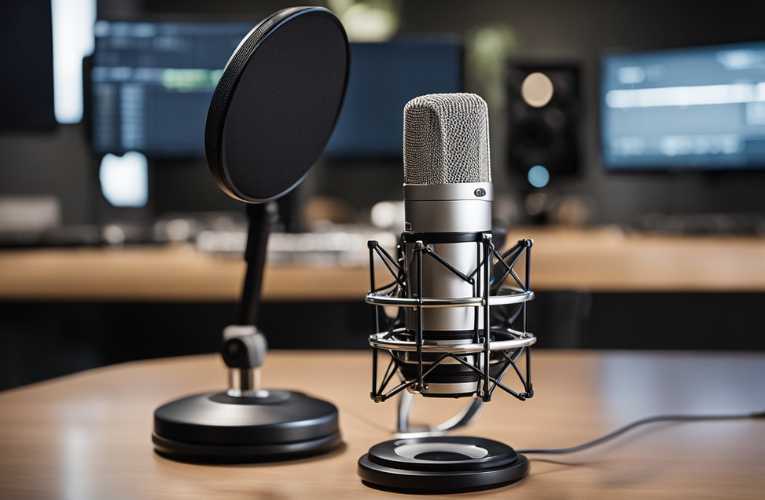
If you are into music production or podcasting, you might have heard about the term “condenser microphone.” A condenser mic is a type of microphone that uses a capacitor to convert sound waves into electrical signals. It is known for its high sensitivity, low noise level, and ability to capture details in sound. In this section, we will explore the technology behind condenser mics and their characteristics.
Technology Behind Condenser Mics
The technology behind condenser mics is based on the principle of capacitance. A condenser mic consists of a thin diaphragm that vibrates when sound waves hit it. The diaphragm is placed close to a metal plate, which acts as a second electrode. The space between the diaphragm and the metal plate forms a capacitor. When sound waves vibrate the diaphragm, the distance between the two electrodes changes, which causes the capacitance to vary. This variation in capacitance produces an electrical signal that represents the sound wave.
Characteristics of Condenser Mics
Condenser mics are known for their high sensitivity, which means they can capture even the faintest of sounds. They are also known for their low noise level, which means they can capture sound with minimal interference from background noise. Condenser mics are ideal for recording vocals, acoustic instruments, and other detailed sound sources.
However, condenser mics are also known for their fragility and sensitivity to temperature and humidity changes. They require a power source, either through batteries or phantom power, to operate. They are also more expensive than dynamic mics, which are another type of microphone commonly used in music production.
In conclusion, condenser mics are a popular choice for recording detailed sound sources due to their high sensitivity and low noise level. However, they require careful handling and maintenance to ensure their longevity.
Related Posts:
Does a Condenser Mic Make you Sound Better
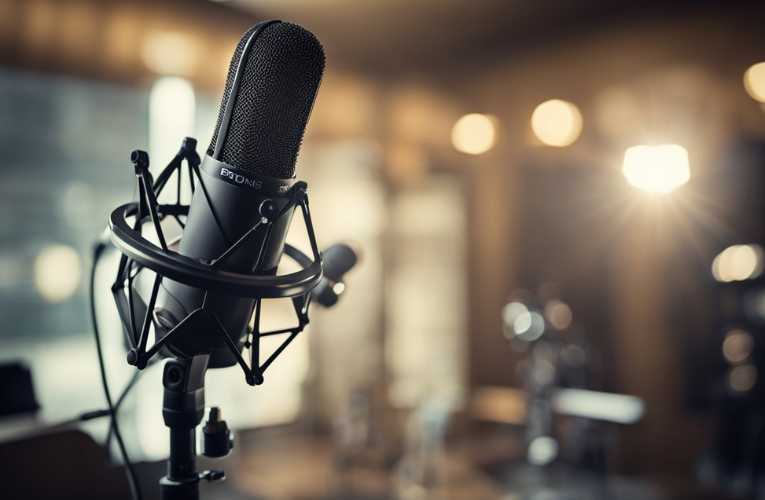
If you are a recording artist or podcaster, you might be wondering if a condenser microphone can make you sound better. The answer is not a simple yes or no, as it depends on what you mean by “better.” However, there are several ways in which a condenser mic can improve your recorded sound quality.
Clarity and Detail
One of the most significant advantages of using a condenser microphone is the clarity and detail it can capture. Condenser mics are incredibly sensitive and can capture a wide range of frequencies, which means that they can pick up more nuances in your voice or instrument. This is especially true for high-frequency sounds, such as sibilant consonants or cymbals, which can sound dull or muffled when recorded with a dynamic microphone.
Moreover, condenser microphones have a faster transient response than dynamic microphones, which means that they can capture sudden changes in volume more accurately. This is why condenser mics are often used for recording acoustic guitars or pianos, as they can capture the subtle nuances of the instrument’s attack and decay.
Versatility in Recording
Another advantage of condenser microphones is their versatility in recording different sound sources. Condenser mics come in different polar patterns, such as cardioid, omnidirectional, or figure-8, which means that they can be used to record a single sound source or multiple sound sources simultaneously.
For example, if you are recording a podcast, a cardioid condenser microphone can capture your voice while rejecting background noise. Conversely, if you want to record the ambience of a room or capture multiple sound sources, an omnidirectional or figure-8 condenser microphone might be a better choice.
In conclusion, a condenser microphone can make you sound better in terms of clarity, detail, and versatility in recording. However, it is essential to choose the right microphone for your specific needs and to use proper recording techniques to get the most out of your equipment.
Related Posts:
Comparison of Condenser Mic with Dynamic Mic
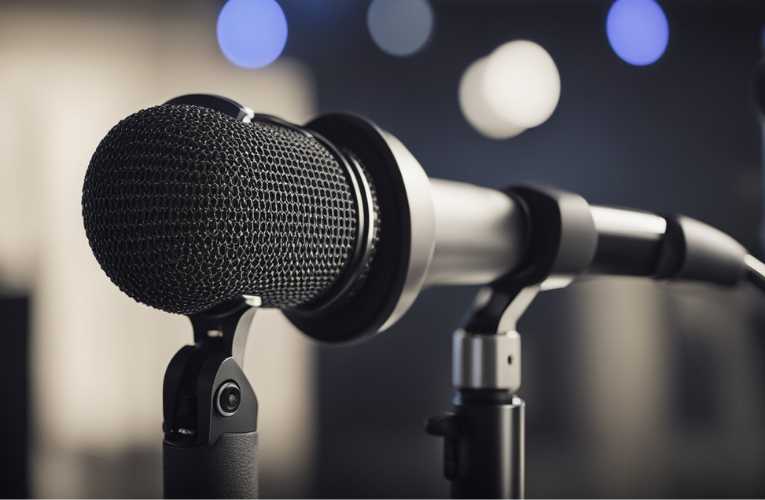
Sound Differences
When it comes to sound quality, the main difference between a condenser mic and a dynamic mic is that the former produces a more detailed and crisp sound, while the latter is better at handling high volumes without distortion. Condenser mics have a thin, metal diaphragm that is charged with a voltage, which allows them to capture a wider range of frequencies and nuances in sound. On the other hand, dynamic mics use a magnetic coil to capture sound, which results in a warmer and more rounded sound.
Another difference is that condenser mics require phantom power, which is a voltage sent to the mic through the XLR cable. This can be provided by an external power supply or a mixer. Dynamic mics, on the other hand, do not require phantom power and can be plugged directly into an amplifier or mixer.
Usage Scenarios
The choice between a condenser mic and a dynamic mic depends on the intended usage scenario. Condenser mics are best suited for recording sung or spoken vocals, acoustic guitars, pianos, and other instruments that require a detailed and nuanced sound. They are also ideal for recording in a studio environment where the sound can be controlled and isolated.
Dynamic mics, on the other hand, are better suited for live performances, outdoor recordings, and other scenarios where there is a lot of ambient noise. They are also better at handling high volumes without distortion, which makes them ideal for recording electric guitars, drums, and other loud instruments.
In summary, while both condenser and dynamic mics have their strengths and weaknesses, the choice between the two ultimately depends on the intended usage scenario and personal preference. If you are looking for a mic that can capture a detailed and nuanced sound, a condenser mic may be the better choice. If you need a mic that can handle high volumes and ambient noise, a dynamic mic may be the better choice.
Optimizing Condenser Mic Performance
When it comes to optimizing the performance of a condenser microphone, there are two main areas to focus on: proper setup and acoustic treatment.
Proper Setup
To get the best sound out of your condenser microphone, it’s important to set it up properly. Here are a few tips to keep in mind:
- Positioning: Place the microphone at a comfortable distance from your mouth to avoid popping sounds and breath noises. The recommended distance is around 6-8 inches away from your mouth. Also, make sure the microphone is positioned at the appropriate angle to capture the sound correctly.
- Phantom Power: Most condenser microphones require phantom power to operate. Make sure your audio interface or mixer is providing the necessary phantom power to the microphone.
- Gain Staging: Proper gain staging is crucial to getting a clean and noise-free recording. Start with a low gain setting and gradually increase it until you get the desired level.
Acoustic Treatment
Acoustic treatment refers to the process of controlling the sound reflections in your recording environment. This is important because reflections can cause unwanted echoes and reverberations, which can affect the quality of your recording. Here are a few tips for acoustic treatment:
- Room Selection: Choose a room that has minimal outside noise and is free of any reflective surfaces such as glass or tile.
- Absorption: Use acoustic panels or blankets to absorb sound reflections. Place them on the walls, ceiling, and floor of your recording space.
- Diffusion: Use diffusers to scatter sound reflections and create a more natural-sounding recording environment. Place them on the walls and ceiling of your recording space.
By following these tips for proper setup and acoustic treatment, you can optimize the performance of your condenser microphone and achieve a better sound quality in your recordings.
Potential Drawbacks
While condenser microphones are often favored for their high sensitivity and ability to capture fine details of sound, they do have some potential drawbacks that you should be aware of.
Handling Noise
One major drawback of condenser microphones is their susceptibility to handling noise. Due to their sensitivity, they can pick up even the slightest movement or touch, which can be problematic if you’re recording in a noisy environment or if you tend to handle the microphone a lot. This can result in unwanted noise in your recordings, which can be difficult to remove during the editing process.
To minimize handling noise, it’s important to handle the microphone gently and keep it in a stable position. You may also want to use a shock mount or a boom arm to isolate the microphone from vibrations and movements.
Sensitivity to Plosives
Another potential drawback of condenser microphones is their sensitivity to plosives, which are the sudden bursts of air that occur when you pronounce words with “p” and “b” sounds. These sounds can cause a popping or booming effect in your recordings, which can be distracting and difficult to remove.
To minimize plosives, you can use a pop filter or a windscreen to diffuse the air before it reaches the microphone. You can also try adjusting your microphone placement or using a different microphone that is less sensitive to plosives.
Overall, while condenser microphones offer many benefits for recording vocals and other sound sources, it’s important to be aware of their potential drawbacks and take steps to minimize them for the best possible results.
Conclusion
In summary, a condenser mic can make you sound better if used correctly. It is more sensitive than dynamic mics and can capture even the faintest of sounds, making it ideal for vocals and acoustic instruments. However, it also requires careful handling to minimize unwanted noise.
To get the best results, consider factors like the polar pattern, frequency response, and sensitivity of the mic. Experiment with different positions and distances to find the sweet spot. Remember to use a pop filter to reduce plosives and a shock mount to isolate the mic from vibrations.
Ultimately, whether a condenser mic makes you sound better depends on your skill as a performer and the quality of your recording environment. Practice good mic technique, invest in acoustic treatment, and strive for a clean and natural sound.
Frequently Asked Questions
What are the advantages of using a condenser microphone for studio recording?
Condenser microphones are highly sensitive and have a wide frequency response range, which makes them ideal for studio recording. They can capture subtle nuances in sound that dynamic microphones cannot, resulting in a more detailed and accurate recording. Additionally, condenser microphones are great for capturing vocals and acoustic instruments such as guitars and pianos, as they have a natural and warm sound.
How does a condenser mic compare to a dynamic mic for streaming?
For streaming, a dynamic microphone may be a better choice than a condenser microphone. Dynamic microphones are less sensitive than condenser microphones, which means they are less likely to pick up background noise and other unwanted sounds. This makes them ideal for streaming, where you want to capture your voice clearly without any distractions. Additionally, dynamic microphones are more durable and can handle higher sound pressure levels, making them ideal for live streaming and other high-energy activities.
Can condenser microphones be effectively used for live performances?
While condenser microphones are primarily used in studio recording, they can also be used for live performances. However, they are more sensitive than dynamic microphones, which means they may pick up more background noise and other unwanted sounds. Additionally, they require phantom power, which may not be available in all live performance settings. If you do choose to use a condenser microphone for live performances, make sure to test it out in the venue beforehand to ensure it will work well in that particular environment.
What are the potential drawbacks of using a condenser microphone?
One potential drawback of using a condenser microphone is that they can be more expensive than dynamic microphones. They are also more sensitive, which means they may pick up unwanted sounds and require a quieter recording environment. Additionally, they require phantom power, which may not be available in all recording environments. However, if you are looking for a high-quality and accurate recording, a condenser microphone may be the best choice.
In what situations is a dynamic microphone preferable over a condenser mic?
Dynamic microphones are preferable over condenser microphones in situations where you need to capture loud sounds, such as live performances or recording electric guitars and drums. They are also more durable and less sensitive than condenser microphones, which makes them ideal for outdoor recording and other high-energy activities. Additionally, dynamic microphones are often more affordable than condenser microphones, making them a great choice for those on a budget.
How does the Shure SM7B dynamic mic stack up against typical condenser microphones for podcasting?
The Shure SM7B dynamic microphone is a popular choice for podcasting and broadcasting. While it is a dynamic microphone, it has a frequency response range that is similar to many condenser microphones. This means it can capture a wide range of frequencies and produce a warm and natural sound. Additionally, the Shure SM7B has a built-in pop filter and shock mount, which makes it ideal for podcasting and other vocal recordings. Overall, the Shure SM7B is a great choice for those looking for a high-quality dynamic microphone for podcasting and broadcasting.

